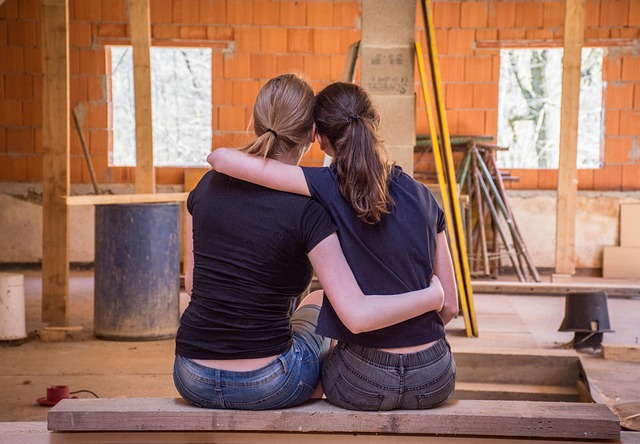
Guarding Hearts With Emotional Protection in Empathetic Relationships
In a world where vulnerability has become both a gift and a risk, the art of emotional protection stands out as a vital skill for anyone navigating intimate bonds. It is not about building walls that block love; rather, it is a conscious practice that lets us share our inner worlds while safeguarding against unnecessary hurt. The practice of emotional protection is especially critical in empathetic relationships—those where partners actively seek to understand each other’s feelings and support one another’s growth.
Understanding Emotional Protection
At its core, emotional protection is the balance between openness and self-preservation. It involves setting healthy boundaries, choosing when and how to express feelings, and learning how to listen without internalizing every emotional wave that comes our way. In empathetic dynamics, this balance becomes more nuanced because each person is tuned into the other’s emotional state. Knowing when to let the other breathe, and when to gently steer the conversation back to safety, can keep the relationship strong and resilient.
Key Components of Emotional Protection
- Self-awareness: Recognizing your emotional triggers and how they influence reactions.
- Boundary setting: Clearly communicating limits and respecting the limits of others.
- Compassionate listening: Engaging fully with the partner’s perspective while maintaining personal emotional space.
- Reflective response: Choosing a reply that considers both your needs and your partner’s feelings.
The Importance of Emotional Protection in Empathetic Relationships
Empathy is a double-edged sword. While it allows for deeper connection, it also invites the risk of emotional contagion—absorbing another’s distress as if it were your own. Without emotional protection, a caring partner might experience overwhelming guilt or sadness, which can erode self-esteem and ultimately damage the relationship. By practicing emotional protection, we enable empathy to flourish without sacrificing our own mental health.
Consequences of Neglecting Emotional Protection
“When you pour all your emotional energy into someone else, you risk running out of energy for yourself.” – Anonymous
Without protective boundaries, partners can fall into patterns of codependency, where each person relies on the other for emotional validation. This dynamic may result in burnout, resentment, or a diminished sense of individuality. The cycle is often invisible, as both parties may believe they are merely “being supportive.” The key difference, however, is that emotional protection maintains the integrity of each partner’s inner world while allowing the relationship to thrive.
Practical Ways to Cultivate Emotional Protection
Building emotional resilience takes deliberate practice. Below are evidence-based strategies that can be incorporated into daily life, ensuring both partners feel seen and respected.
- Daily Check-ins: Spend 5–10 minutes reflecting on your emotional state each day. Ask yourself: “What am I feeling? Why? What do I need?” Journaling or mindful breathing can help crystallize these insights.
- Clear Boundary Language: Instead of vague statements like “I need space,” say, “I need 30 minutes alone right now to recharge.” The specificity helps prevent misunderstandings.
- Active Listening Rituals: Use techniques such as mirroring (“So you’re saying you feel hurt when…”). This demonstrates empathy while keeping your reaction separate from the content of what is being shared.
- Emotion Labeling: When discussing feelings, label them (“I notice you feel frustrated”). Naming emotions can reduce their intensity and help each partner maintain a level of emotional distance.
- Self-Compassion Breaks: If a conversation escalates, pause and check in with yourself. Remind yourself that it is okay to feel upset without feeling responsible for the other’s feelings.
When to Seek Professional Support
Sometimes, despite the best intentions, emotional protection feels out of reach. If you notice persistent patterns of emotional exhaustion, difficulty setting boundaries, or recurrent conflicts that lead to distress, consider seeking a therapist or counselor who specializes in relational dynamics. Professional guidance can offer tailored tools and a neutral space to explore emotional safety in partnership.
Integrating Empathy with Protection: The Sweet Spot
Empathy and emotional protection are not mutually exclusive; they are complementary. Think of empathy as the conduit for connection, and emotional protection as the protective frame that keeps the conduit from collapsing. Together, they form a sustainable framework for loving relationships.
- Empathy fuels connection: It allows partners to step into each other’s shoes, fostering understanding and trust.
- Protection maintains balance: It ensures each partner retains autonomy and emotional clarity.
- Combined, they promote growth: A relationship that values both can navigate challenges with grace and resilience.
Reframing Common Relationship Pitfalls
Consider the scenario where one partner constantly offers solutions, unintentionally undermining the other’s emotional autonomy. Instead, respond with a question: “What do you need from me right now?” This small shift preserves emotional protection by giving the other space to process and decide how best to move forward.
Self-Care as a Foundation of Emotional Protection
Self-care is not a luxury; it is the bedrock upon which healthy emotional boundaries rest. When we prioritize sleep, nutrition, hobbies, and personal downtime, we reinforce our capacity to remain emotionally steady during relationship storms.
“The most profound empathy begins with a well‑nurtured self.” – Unknown
By investing in personal well‑being, you send a clear message to your partner: “I am worthy of care and respect, and I expect the same in return.” This mutual respect solidifies the emotional safety net that keeps both hearts guarded.
Practical Self-Care Steps
- Schedule a “self‑time” slot each week, free from relationship responsibilities.
- Engage in a physical activity you enjoy—walking, dancing, or yoga—to release built‑up tension.
- Practice gratitude journaling, noting at least one thing you appreciate about yourself daily.
- Establish a nightly wind‑down routine that signals the end of the day and invites rest.
Conclusion: The Ongoing Journey of Emotional Protection
Guarding hearts through emotional protection is an evolving practice that requires patience, self‑compassion, and an earnest desire to deepen relational intimacy. It invites us to become both the receiver and the guardian of our emotions, ensuring that love remains a safe harbor rather than an open sea.
By weaving empathy with protective boundaries, by setting clear limits and practicing mindful listening, couples can navigate the highs and lows of partnership with confidence. The result is a relationship that honors individuality while celebrating connection—a dynamic that thrives on mutual respect and emotional safety.

